This secret donor has given USC $400 million
- Share via
To walk the campus of the University of Southern California is to be presented with a list of its benefactors. Donor names shout from classroom buildings and dorms, the food court and the swimming pool, the news desk at the journalism school, and even the yard of the Catholic church.
But for the man believed to have given more money to USC than anyone else, there are no engraved facades or illuminated signs.
Billionaire B. Wayne Hughes Sr., a founder of self-storage behemoth Public Storage, has donated about $400 million to the university — nearly all of it anonymously, according to sources familiar with his philanthropy. It is a staggering generosity that has not previously been reported and ranks him among the most significant backers of higher education in the West.
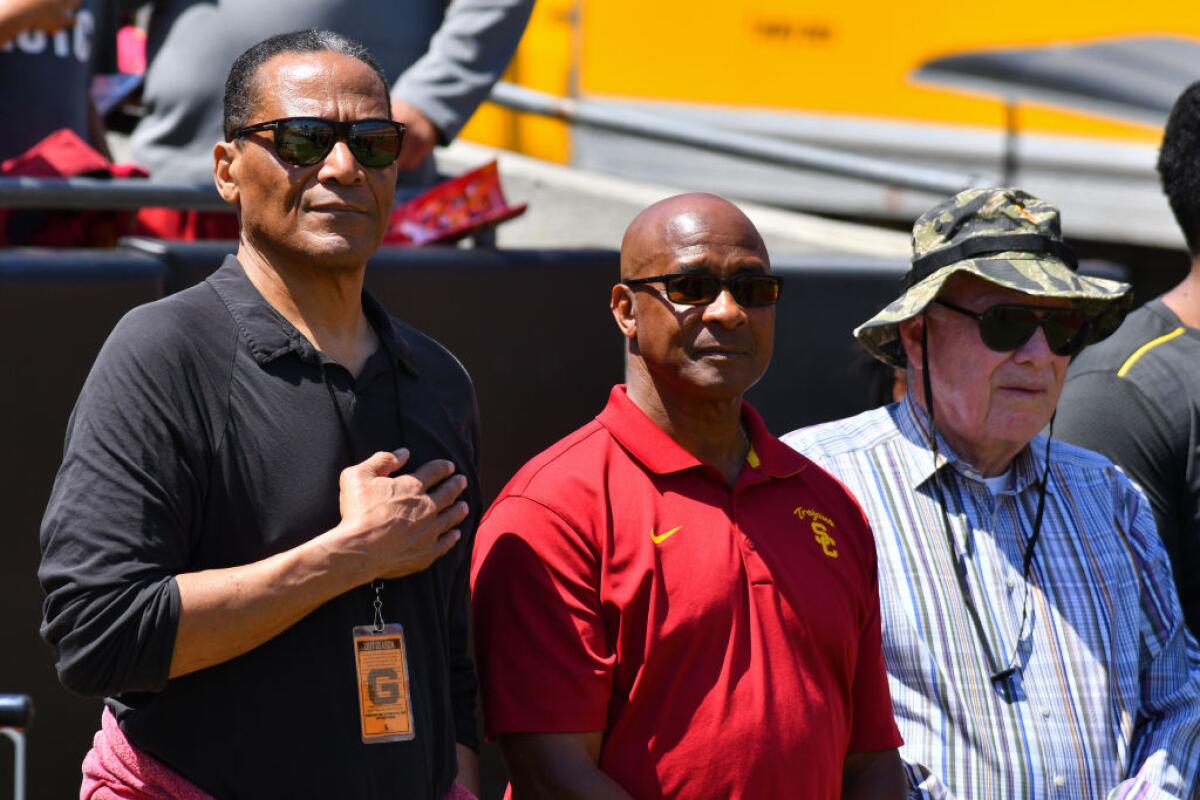
Hughes, 85, has told associates that publicizing charitable work diminishes it. He “has intentionally chosen to live his life in a way that he avoids the spotlight,” his attorney said in declining an interview request.
His reticence is a rarity in Los Angeles, where wealth and self-promotion often go hand in hand. And it obscures an extraordinary biography that blends the American Dream with California noir, with USC playing a pivotal role.
The son of a sharecropper who fled Dust Bowl Oklahoma, Hughes grew up poor in the San Gabriel Valley and won a scholarship to USC in the 1950s, a time when a degree from the private school was a passport to L.A.’s upper class.
He and a business partner made fortunes by giving people — first in California and later the rest of the country — a place to park their old furniture and clothes. Like Kleenex or Band-Aids, Public Storage became shorthand for an entire product. Long after the Glendale corporation was a billion-dollar business, Hughes kept middle-class habits, eating fast food and hanging out with buddies at the Santa Anita racetrack.
He returned often to the USC campus, mentoring a circle of Trojan football stars who became lifelong friends, including Lynn Swann, Marcus Allen, Rodney Peete and O.J. Simpson. He stood by Simpson through his murder trial and, according to a defense attorney, worked behind the scenes to help plot a successful court strategy.
Now in the twilight of his life, Hughes’ enduring interest in his alma mater has translated into huge financial gifts. Though administrators declined to speak about Hughes’ contributions, three sources confirmed that he was the anonymous donor identified in a USC publication as having given $360 million between 2010 and 2015.
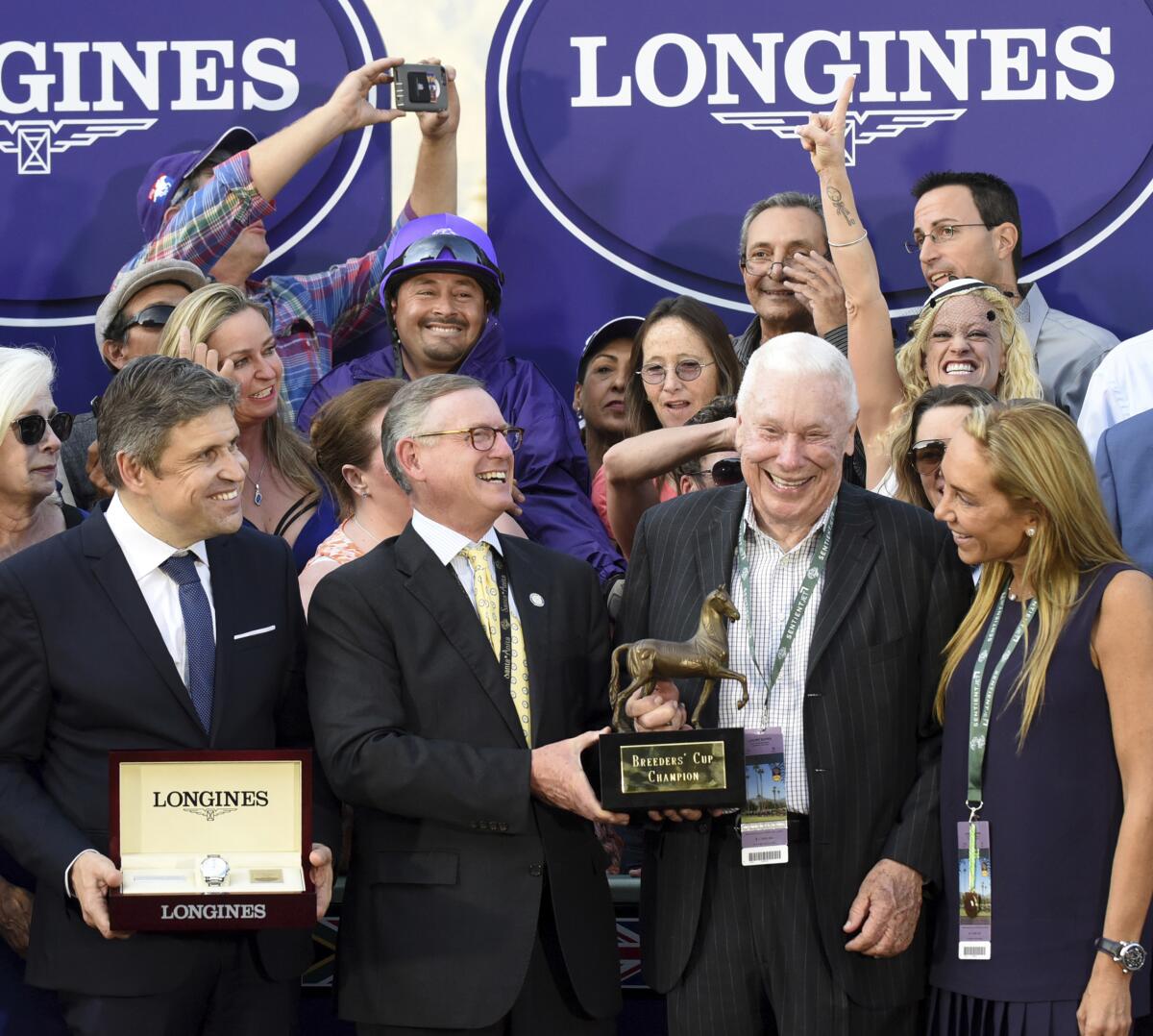
Hughes has grown close to university leaders, with former school President C.L. Max Nikias visiting him at his Kentucky thoroughbred farm, and installing his daughter, Tamara Hughes Gustavson, one of Southern California’s wealthiest women, on the powerful executive committee of the governing board.
Hughes has a particular focus on the athletic department, where Swann, his longtime friend, was appointed athletic director three years ago. Swann’s tenure has been a rocky one, and over the last year, as the beloved Trojan football team has floundered and an admissions scandal rooted in athletics humiliated USC, some alumni and boosters have begun debating Hughes’ sway.
“You could argue that he is the most powerful person at USC, more powerful even than the president,” said Petros Papadakis, a sports broadcaster who was captain of the Trojan football team in 2000.
‘The genius in jeans’
In the early 1970s, storage facilities were mom-and-pop operations: cinderblock stalls with garage doors, padlocks and, if you were lucky, a chain-link fence around the property.
Most were in Texas, and it was along a Houston highway in 1972 where the idea for Public Storage was born. A business associate of Hughes, Kenneth Volk Jr., spotted a sign for “private storage.” Curious, he went inside the warehouse posing as a customer. You’ll have to get on a wait list, an employee told him. All the units are taken.
Volk was nearing the end of his career as a land developer, but he knew a good idea when he saw it and he quickly took it to Hughes, an L.A. real estate executive who’d recently opened his own firm.
Hughes quickly grasped the potential of self-storage. Units were cheap to build and delivered a constant stream of rent money without the overhead of apartment buildings or the hassle of tenants. If the location became in demand for development down the line, Hughes figured, he could bulldoze the warehouses and turn a tidy profit.
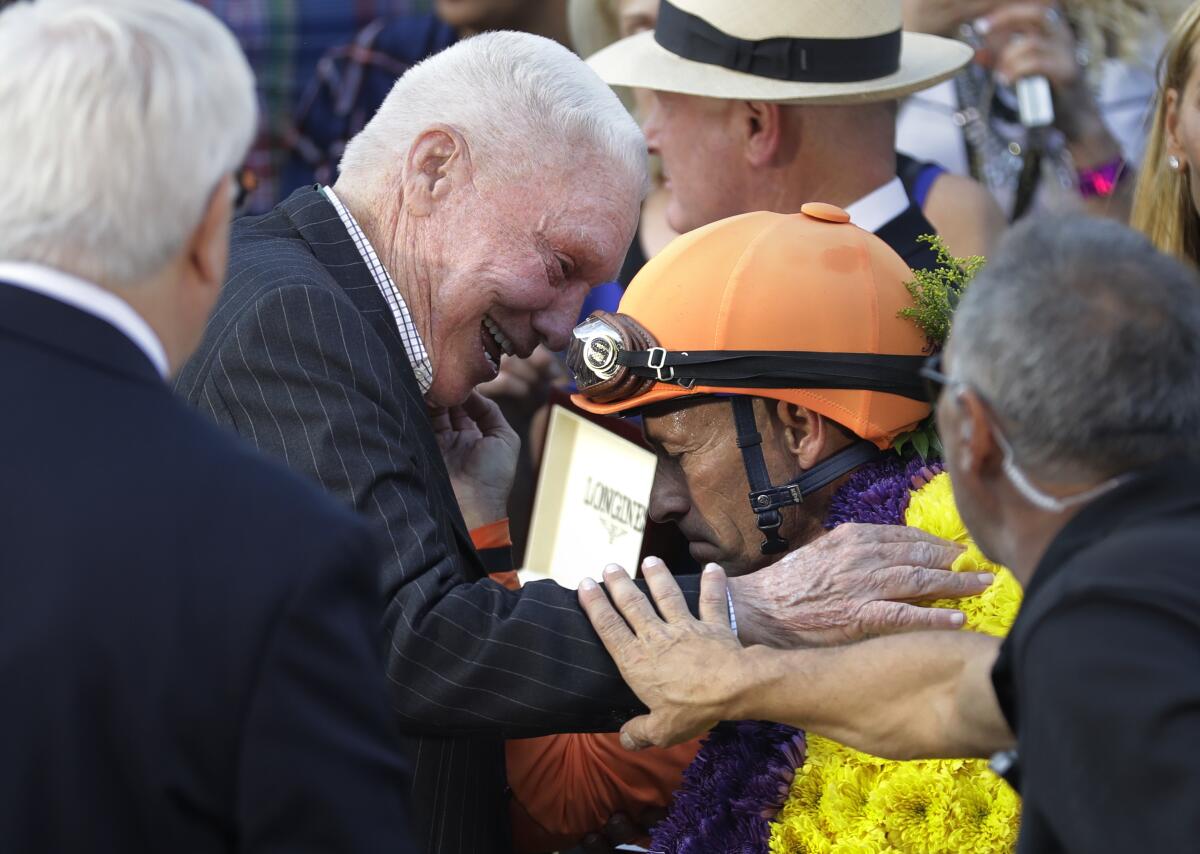
“I saw a method of holding prime land with income,” Hughes told The Times in 1990.
Then married with two children, Hughes invested $25,000 and asked friends to chip in as well. One who did was former NFL linebacker Al “A.C.” Cowlings, according to sworn testimony decades later in the wrongful death suit against Simpson. Hughes had befriended Cowlings at USC, where he had played alongside his childhood friend Simpson.
The first Public Storage opened in El Cajon in 1972. Within months, it turned a profit and Hughes and Volk began looking to expand. Unlike many other storage entrepreneurs of the time who relied on relatives or banks for funding, Hughes and Volk offered limited partnerships to the public. That gave Public Storage a scale that their competitors couldn’t match.
“They were able to build the company quickly, and the larger they got, the more purchasing power they got, and they could do things even faster,” said retired storage executive Robert Schoff, who went to work in his family’s Arizona-based storage business at around the same time. “I remember they had 100 facilities, and then all of a sudden they had a thousand. It was like, ‘Wow!’ ”
After being advised to hire a consultant to choose new warehouse locations, Hughes later told friends, he opted for a simpler, cheaper plan: Open a Public Storage in every city with an NFL franchise.
Volk’s son, Kenneth III, pitched in at the Glendale headquarters during high school and recalled Hughes as a “hip guy” who dressed in bell-bottom jeans and stylish shirts and led pep-rally-like meetings for his staff.
He “was like, ‘Let’s go out and do this!’ He was sort of a cheerleader,” Volk said. “He definitely installed some flash — with substance — to excite the internal workforce.”
Some in the industry began referring to Hughes as “the genius in jeans.” Kenneth Woolley, who founded Public Storage competitor Extra Space Storage, worked for Hughes in the 1980s and said he had a gift for devising innovative and low-risk ways to finance projects that even Wall Street brokers had missed.
Woolley said that even counting his PhD program at Stanford and 40 years in the business world, “I’ve never met anyone as smart or creative” in finance as Hughes.
Self-storage proved so lucrative that Hughes’ idea of eventually selling the properties to developers fell by the wayside. The warehouses were there to stay, and by 1990, Public Storage was the nation’s largest provider of self-storage. Hughes has said he was working so hard he barely registered the flood of revenue.
“When we decided to go public and I saw how much money there was, I was very surprised,” he told GQ in 2012, one of the few interviews he’s done over his career.
Today, Public Storage is valued at more than $40 billion, its bold orange signs ubiquitous across the U.S., Canada and parts of Europe.
Hughes and his relatives did not respond to queries for this article. Provided with a summary, a lawyer for Hughes, Dawn Eyerly, said the information was “replete with many inaccuracies and mischaracterizations of his relationships,” but did not elaborate.
Hughes stepped down as chairman of Public Storage’s board in 2011, but his family retains control over 14% of the company, according to corporate filings. Forbes estimates Hughes’ personal wealth at $3.2 billion; his daughter, 57, who has a house in Malibu and is Public Storage’s largest shareholder, is worth $5.7 billion, and his son, B. Wayne Jr., 55, is worth $1.7 billion. Both are USC alumni.
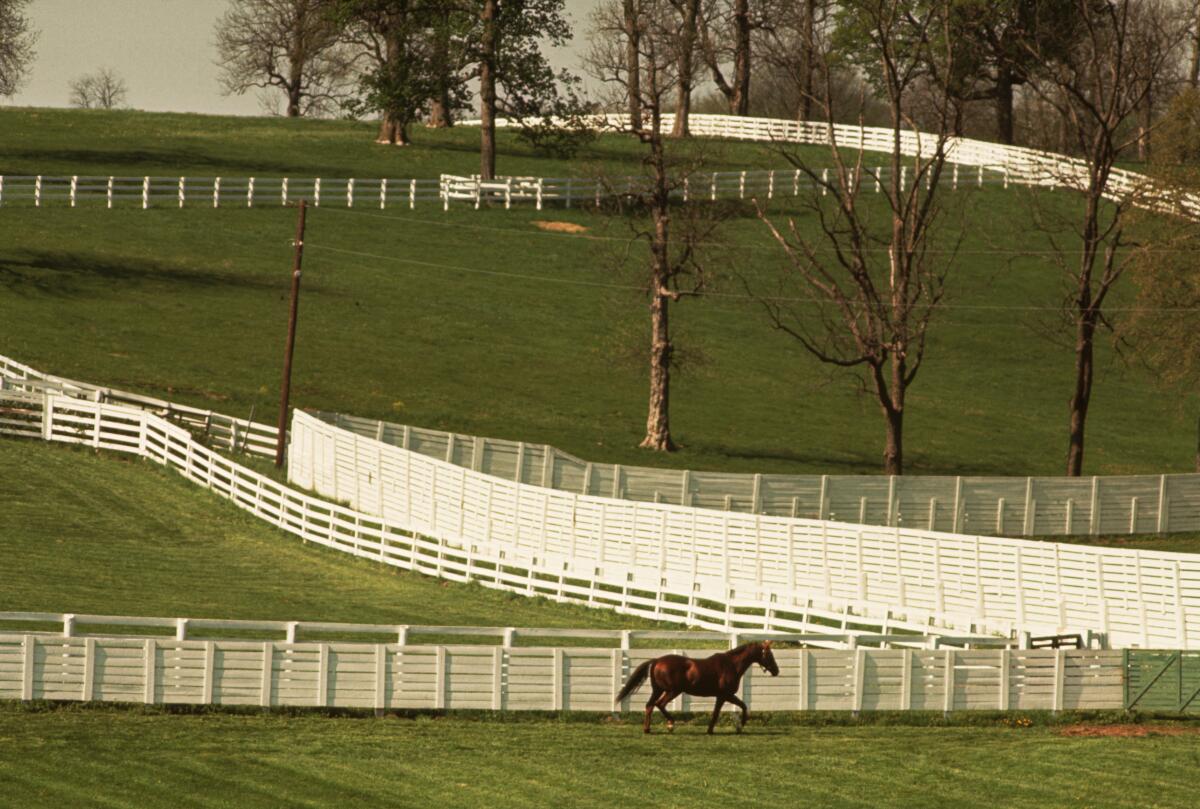
Hughes now spends much of his time on horseracing, having in 2004 purchased and restored Spendthrift Farm, the Lexington, Ky., institution legendary for turning out champion stallions. He married his third wife, Patricia Whitcraft, in 2017.
‘I might own this place’
People who know Hughes portray him as seemingly unaffected by his wealth. He has celebrated racing victories at In-N-Out Burger, and for years ate breakfast at a Coco’s near Santa Anita several days a week.
He lives in faded jeans and baggy golf shirts.
“I think the clothes he wears cost maybe 40 bucks,” said jockey agent Tom Knust, who has known Hughes for decades. “He is about as down to earth as anyone you will see.”
Once when Hughes and three friends won a Pick 6 worth $120,000, “he insisted he cash the ticket because he [said he] had never seen that much money in cash,” Knust said, noting, “he was a billionaire at that time.”
He surrounds himself with men who knew him before he was rich. One of his closest friends for decades was a high school classmate, Jim Sterkel, who worked as a Johnson Wax salesman.
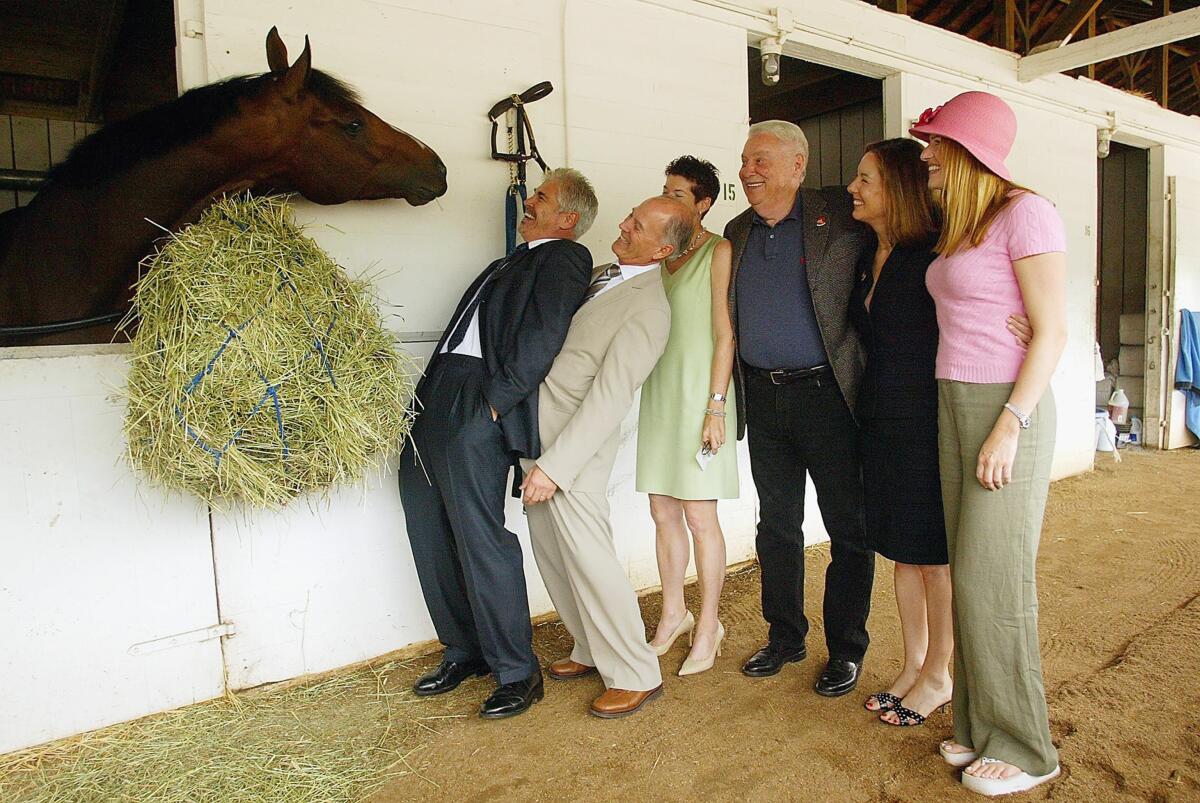
Hughes and Sterkel, who died in 1997, often went on camping and fishing trips. His daughter Jill Sterkel recalled one outing that underscored Hughes’ nonchalant view of his wealth.
“They were in a hotel restaurant, and Wayne was like, ‘I think I might own this place,’ ” she recalled. “As opposed to somebody who would be like, ‘I own this place so seat me here.’ ”
Hughes’ upbringing offered little opportunity for snobbishness or extravagance. Raised Bradley Wayne Hughes on a farm in Oklahoma’s Kiowa County, Hughes moved to L.A. with his family in the 1930s, part of the Dust Bowl migration depicted in “The Grapes of Wrath.”
The family lived for a time in El Monte, and he later attended school in Alhambra. His parents had eighth-grade educations, and his father struggled at times to find work, according to census records.
Hughes graduated from Alhambra’s Mark Keppel High School in 1951 and, after a stop in junior college, enrolled at USC.
At the time, jet travel was uncommon and expensive, making East Coast universities outside the grasp of many L.A. families. USC seemed to embody the city’s ambitions, and its hard-charging football team, with frequent victories over Eastern schools, was a particular point of pride.
Hughes pledged a fraternity popular with athletes, Phi Kappa Psi, where his high school friend Sterkel, a member of the Trojan basketball team, was also a brother.
Hughes graduated in 1957 with a bachelor’s degree from the School of Commerce, the precursor of USC’s business school.
The next year, Hughes married Marjorie McKechnie.
B. Wayne Jr. was born in 1959, and Tamara in 1961. The couple divorced in 1975, and Hughes married Kathleen Becker in 1983.
A devastating diagnosis
In the early 1990s, the only child of that marriage, Parker, a toddler, was diagnosed with leukemia. The disease went into remission after Hughes took him to a Minnesota physician for experimental treatment. The cancer returned two years later, and Parker died in 1998 at age 8.
Hughes was devastated, but grateful for the extra time with his son and gave $40 million to found a clinic supporting the work of the doctor, Fatih Uckun.
“Two years of life for my boy was worth everything for me,” Hughes told a Minnesota newspaper in 2000, when the Parker Hughes Cancer Center opened.
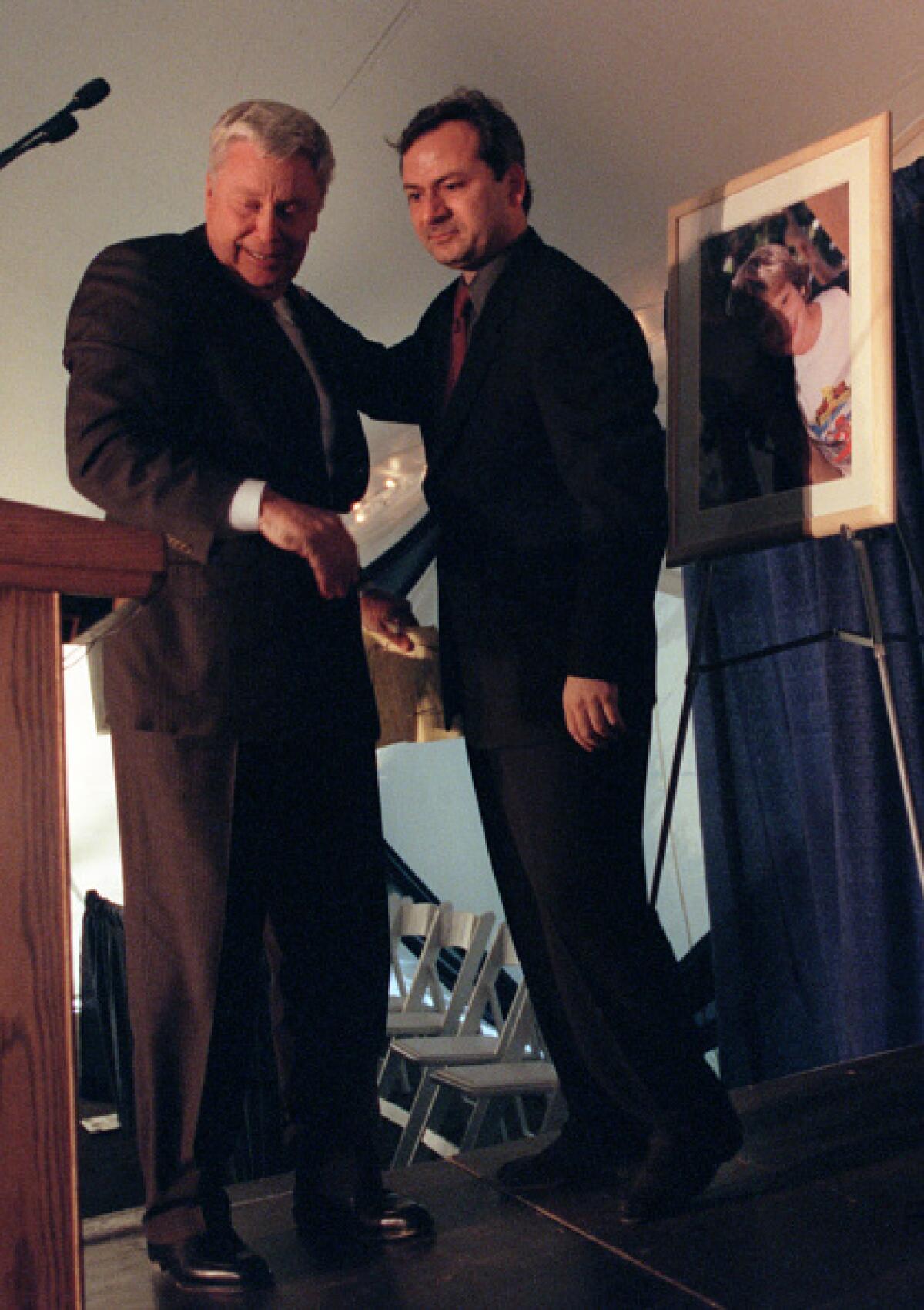
Uckun said in an interview that Hughes was focused on his money making a difference for other families.
“It was never about his child only, it was about children in general,” Uckun said.
Hughes immersed himself in the details of cancer research, and in the years that followed his son’s death, he sometimes became a lifeline for people with relatives newly diagnosed with the disease.
Woolley, his former employee, was running rival Extra Space Storage in 2007 when he learned his daughter-in-law, a mother of five young children, had leukemia. He had largely fallen out of touch with Hughes, he said, but called him in desperation.
“I said, ‘Wayne, I’m in big trouble,’ ” Woolley recalled. Hughes, he said, connected him with a cancer researcher who worked with his daughter-in-law’s doctors. “I feel like I owe my daughter-in-law’s life to Wayne.”
Hughes started a charitable foundation in 1997 that today focuses on funding pediatric cancer research. Tax filings show he and his family have contributed more than $70 million to it over the years.
With the exception of the clinic named for his son, Hughes has rarely acknowledged his charitable gifts. After wildfires killed and threatened horses throughout California in 2017, Hughes gave $50,000 and flew in veterinary supplies and volunteers on a private plane from Kentucky, philanthropy that only came to light a month later when it was mentioned in passing in a racing industry association news release.
In conversations with associates, Hughes has said that he believes giving secretly is ennobling. Uckun, the Minnesota physician, said the billionaire once presented him with a copy of “Magnificent Obsession,” a 1929 novel by Christian minister Lloyd Douglas.
The book tells the story of a feckless young heir whose life is changed by the posthumous example of a brain surgeon named Wayne Hudson who had helped countless people with anonymous gifts and clandestine acts of charity.
The message, Uckun said, was “your own awareness is sufficient reason to be happy and proud of what you have done. It does not require validation by other people.”
Trojan stars and their ‘passionate fan’
On a spring evening in 1972, Hughes took an up-and-coming Trojan wide receiver to dinner. Lynn Swann had gazelle-like moves and had earned a starting spot in his sophomore year. He thought he was doing everything right, he would later recall.
Then the businessman booster across the table asked him a question that stopped him cold.
In the biggest games, Hughes asked, why do you play so ordinary?
“I’d never had a coach or a teammate ask me such a thing, and while I liked Wayne, he was merely a passionate fan,” Swann later recounted to ESPN.
Afterward, Swann watched game film and “saw the ugly truth.”
“I wasn’t the guy making the big catch. I wasn’t the guy making the long run. In fact, I was just, for lack of a better word, a guy,” he said. “That’s when I decided to take my game to a different level.”
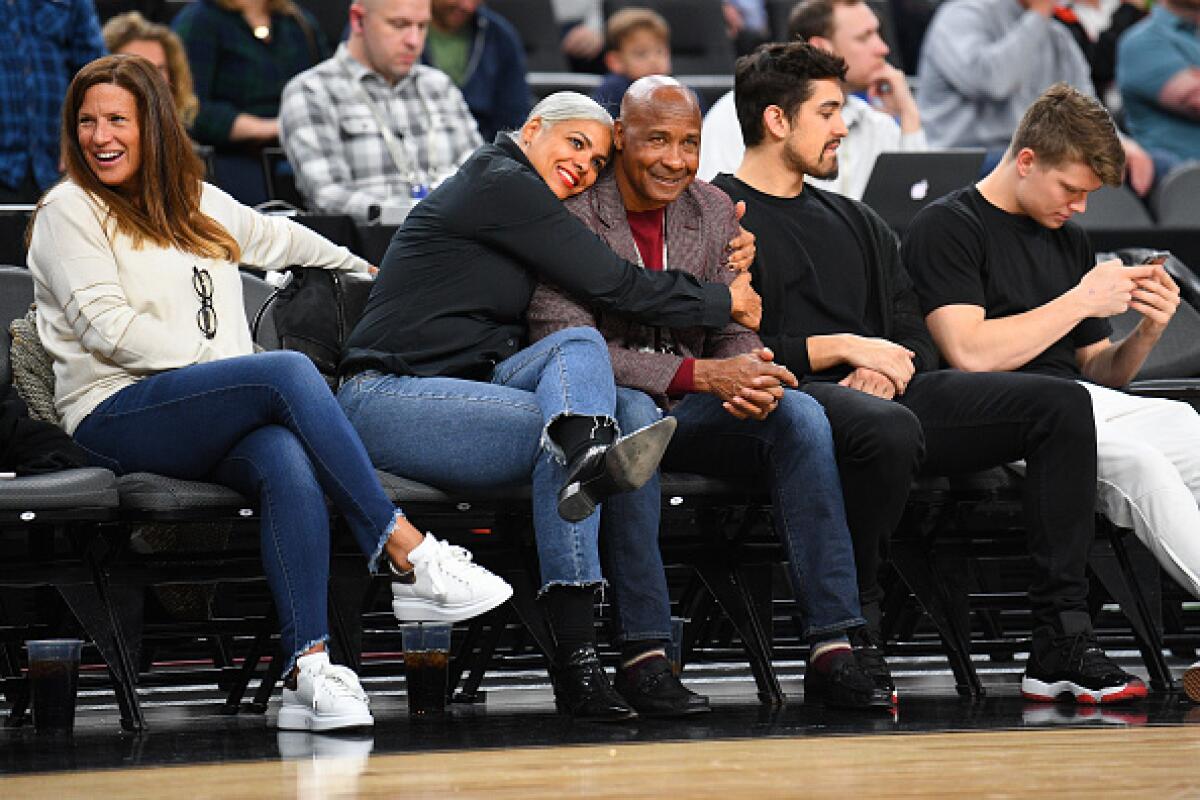
In the years that followed, Swann became a first-round draft pick and won four Super Bowls with the Pittsburgh Steelers. When he was inducted into the NFL Hall of Fame in 2001, he thanked Hughes.
Swann’s experience with Hughes was not unique. However busy he was running his business and tending to his family, Hughes made room for Trojan football. He attended practices and, in an era before modern NCAA regulations, spent time off the field with the team’s best players.
When their Coliseum days ended, Hughes offered jobs, financial advice and investment opportunities in his race horses and other projects. Cowlings took a position with Public Storage after retiring from the NFL, according to sworn testimony in the Simpson civil trial. Swann got a seat on the corporate board of a Hughes company, American Homes 4 Rent, and a directorship on the board of Hughes’ charity.
When Swann ran as a Republican candidate for governor in Pennsylvania, Hughes, a conservative who has given millions to GOP candidates and super PACs, and his family donated more than $165,000. Swann lost the 2006 race.
Hughes also supported former players’ charitable efforts, such as the nonprofit founded by former Trojan quarterback Rodney Peete and his wife, actress Holly Robinson, to aid families living with autism and Parkinson’s disease. Swann, Cowlings, Allen and Simpson were regulars at Hughes’ homes over the years, sometimes tossing footballs in the frontyard with other friends and their children. The relationships extended through the generations with Hughes’ children and grandchildren forming friendships with the players, their wives and children.
Behind the scenes at the trial of the century
That loyalty was put to the test in 1994 when Simpson was arrested on suspicion of murdering his former wife, Nicole Brown Simpson, and her friend Ronald Goldman. It was Cowlings who broke the news to Hughes, according to sworn testimony in the Simpson civil trial.
During the famous white Bronco chase, when Cowlings drove a despondent Simpson through a mesmerized Southern California, another USC alum, Robert Kardashian, read aloud what purported to be a suicide note. The first friend Simpson mentioned and thanked in the letter was Cowlings. The second was Hughes.
Hughes plunged himself into aiding Simpson during the trial of the century. He visited him in the county jail, acted as a legal guardian for the couple’s two young children and met with the lawyers charting a trial strategy.
Robert Shapiro, one of Simpson’s attorneys, recalled in his 1996 memoir that Hughes “wanted to take over the entire financial aspect of the case — and also dictate how the case itself should proceed.”
At a meeting at Hughes’ Malibu home, Shapiro said, the billionaire expressed a desire to be chief executive of the legal team, asked for meetings with forensic experts Henry Lee and Michael Baden, and offered theories on how best to win an acquittal.
“I told him that if he wanted to be a good, supportive friend, we would welcome that; if he wanted to lend financial aid to O.J., that would be appreciated also. But I could not go beyond that,” Shapiro wrote.
It is unclear whether Hughes ponied up money. Asked whether Hughes paid for Simpson’s defense, Shapiro wrote in an email, “I had no financial dealings with Mr. Hughes.”
The businessman had been close to Brown Simpson and knew of at least one incident of alleged domestic violence. In 1982, before the couple married, she arrived at Hughes’ home and complained that Simpson had struck her, according to court records. She was upset and visibly injured, the records show.
In the wake of the killings, authorities scrutinizing the Simpson marriage interviewed Hughes. Court records offer limited and conflicting accounts of what occurred. Superior Court Judge Lance Ito, who presided over the criminal trial, wrote in a 1995 ruling that during their conversation, Brown Simpson “asked Hughes to speak with” her then-boyfriend. But the following year, a Simpson lawyer disputed that to a different judge, saying in a civil proceeding that Hughes “asked Nicole Brown Simpson ... if she wanted him to ever discuss this with O.J. Simpson, she said no.”
In the end, jurors heard extensive testimony about times Simpson hurt his wife or was alleged to have, including a 1989 beating that resulted in a conviction for spousal battery. But they didn’t hear from Hughes. Ito ruled the 1982 conversation at his home “provides only indirect evidence of assaultive conduct.”
Simpson and Hughes appeared to have remained friends for some time after the acquittal. When Simpson regained custody of his children, Hughes stayed on as their legal guardian in probate court, overseeing the money and belongings they inherited from their mother. In this role, he sued Brown Simpson’s relatives to recoup more than $260,000 they made from selling her diary and other items. The case settled confidentially in 1997.
The current status of the relationship between Simpson and Hughes is not publicly known. Simpson didn’t respond to a request for an interview through a publicist. Asked last year by a Kentucky journalist whether Simpson had visited Spendthrift, a farm spokesman said, “I wouldn’t think anytime recently.”
Big gifts, no fanfare
When the Galen Center, USC’s basketball arena, opened in 2006, observant fans noticed an unfamiliar name emblazoned on the floor in crimson.
Jim Sterkel Court.
Intrigued, Times sports columnist Bill Plaschke researched Sterkel and found he had been an unremarkable Trojan player for two seasons in the 1950s. When Plaschke phoned his widow, she knew nothing of the court dedication.
“Are you sure?” his wife, Joanne Sterkel, asked Plaschke. “His name is on what?”

USC would only say that an anonymous donor had given $5 million to name the court. Plaschke interviewed the donor for a column but agreed not to name him. He described him as a “tycoon” who had attended Mark Keppel High and USC with Sterkel and had lost a young son to cancer.
“The joy I have in remembering Jim would be significantly reduced if people knew who I was,” the donor said.
Two sources outside the newspaper confirmed that Hughes was the donor. The floor is believed to be among the first major gifts Hughes made to USC.
University President Steven Sample had tapped Hughes to be a trustee in 1999, but his most significant giving appears to have occurred under Sample’s successor, Nikias. From the time he was named president in 2010, Nikias cultivated a close relationship with the Hughes family. He and his wife, Niki, became so close to Tamara Hughes Gustavson that they designated her as one of two people who could hold power of attorney for them in case they became incapacitated, public records show.
Nikias, who stepped down last year, praised Hughes in a statement as “a man of impeccable character, loyal to his family and his philanthropic causes.”
“He is a devoted Trojan,” the president emeritus said.
One of Nikias’ strategies to elevate USC’s ranking and reputation was to secure what he called “transformative gifts,” the eight- and nine-figure donations that accelerated a $6-billion capital campaign.
News releases soon heralded a $200-million contribution from David and Dana Dornsife, steel magnates from Stockton; $50 million from Pasadena tech entrepreneur Ming Hsieh; $70 million from Silicon Valley venture capitalist Mark Stevens and his wife, Mary; and $150 million from the W.M. Keck Foundation.
Hughes was writing huge checks too, but there were no announcements. He directed much of the money to the athletic department, sources familiar with the gifts said. Some of the money went to pay for the state-of-the-art football training facility named for former coach John McKay.
That building bears one of the few markers of the family’s generosity, a lobby atrium named for Parker, the son he lost to leukemia. A plaque there reads, “Our little man wanted to be a Trojan. And now he is.”
Through the years, Cowlings has remained a confidante to Hughes, often traveling with him to Kentucky and joining him at USC football practices. The retired player, who turned 72 this year, lives at the Hughes’ sprawling Malibu compound, according to voter records.
When Nikias was raising money for a campus expansion known as the Village, Hughes offered to give $15 million to build a dorm named for Cowlings, sources knowledgeable about the deal said.
Some in the administration felt Cowlings’ connection to the Simpson case made the building’s naming unseemly, but Nikias supported accepting the money, and the trustees’ executive committee ultimately signed off. When Cowlings Residential College opened in 2017, Nikias said it paid tribute to the retired football player’s “tremendous passion for his alma mater.”
For longtime friend, a big-time job
For Hughes and other Trojan superfans, the state of the football team three years ago was a source of anguish.
The program had cycled through four head coaches in six seasons. Athletic director Pat Haden famously fired one coach, Lane Kiffin, on the LAX tarmac after a midseason loss to Arizona State. Steve Sarkisian was ousted halfway through his second season after slurring his words and shouting profanities at a booster event. He later acknowledged he had been battling alcoholism, an admission that raised doubts about the vetting USC had done.
When Haden announced he was stepping down in 2016, USC hired a search firm to scour the nation for an athletic director many hoped would bring modern leadership and professionalism to the department.
There was no trouble lining up impressive candidates.
Those interested included McKay’s son, Rich, a Princeton graduate and attorney who is CEO of the Atlanta Falcons; Syracuse AD Daryl Gross, a former USC athletics administrator who now heads Cal State L.A.’s sports program; and Steve Lopes, the longtime No. 2 in USC’s athletic department.
Multiple rounds of interviews winnowed 200 prospects to about seven finalists. One person knowledgeable about the search process said Hughes indicated to Nikias that he preferred Swann for the job. Hughes’ attorney said it would be “wholly inaccurate” to say he had lobbied Nikias to appoint Swann.
Swann had never run an athletic program, let alone worked at a university, and he had scant management experience beyond serving on the boards of companies and charities. USC’s athletic director would oversee a budget of $100 million, 21 varsity teams and at least 650 student-athletes.
Nikias chose Swann, a decision that left many in collegiate sports slack-jawed. In a statement responding to reporters’ questions, the former president said he had made the decision himself without input from trustees.
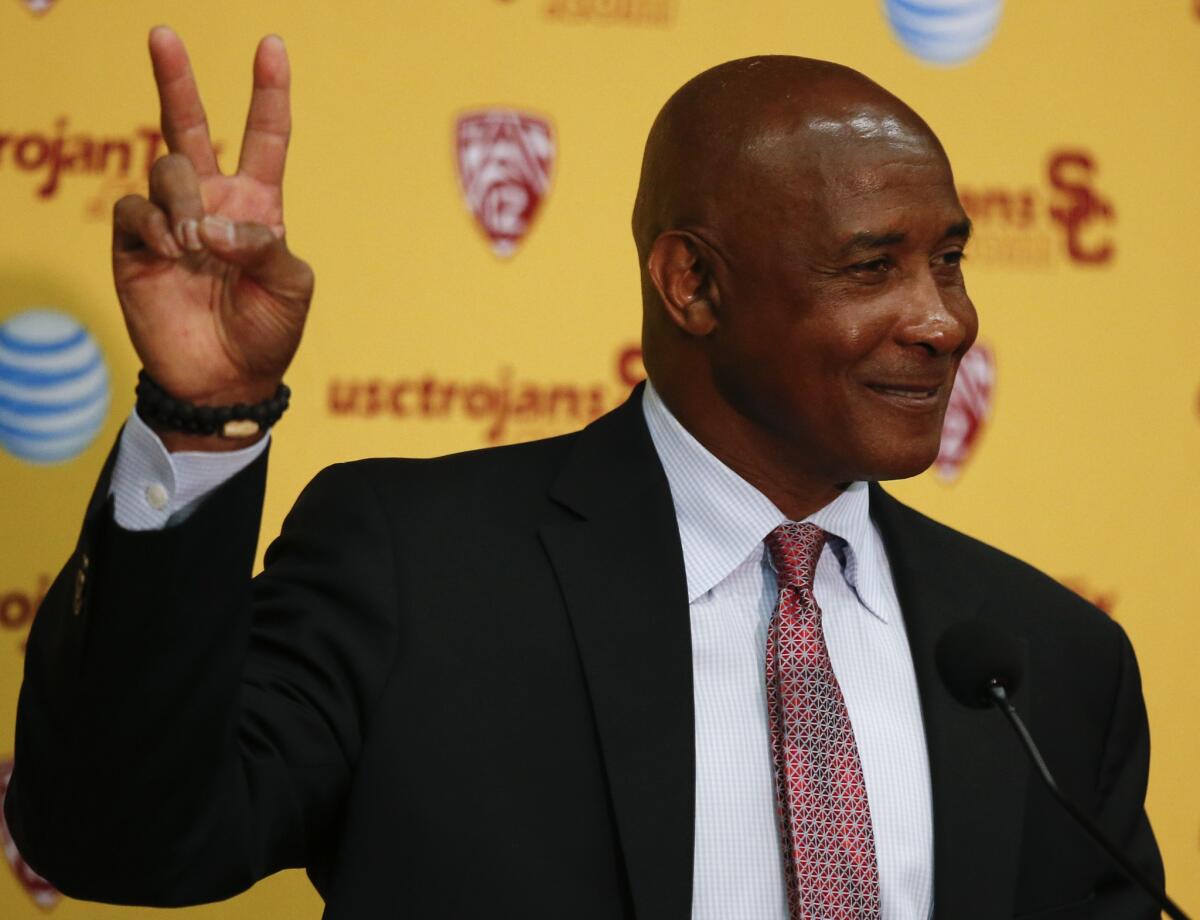
“At no point was there any influence from any donor or member of the board,” he said. “None whatsoever.”
Swann’s tenure was initially unremarkable, but last year, the football team suffered its first losing season since 2000, including a humiliating defeat by UCLA. Boosters, alumni and others who travel to every game and obsessively follow the team grew more and more disenchanted with head coach Clay Helton as the season went along.
Many wanted Swann to oust him and looked to Hughes for help making it happen.
“Heritage Hall insiders know the only person [Swann] will listen to does not even work on campus,” journalist Scott Wolf wrote about Hughes on his popular USC sports blog.
Before a November game against Notre Dame, a chartered plane flew a banner over the Coliseum reading, “Lynn Swann – Please Fire Clay Helton!”
The next day, Swann announced he had decided to keep Helton on. The backlash was swift, furious, and sometimes directed at the man boosters saw as responsible for Swann’s reign.
A hyperbolic January post on a message board for USC superfans began, “Wayne Hughes Destroyed USC Athletics.”
The college admissions scandal this spring dealt another blow to the athletic department and brought further criticism of Swann.
He professed ignorance of the criminal ring allegedly operating in his department, telling a Times columnist, “I think everybody was blindsided by this.”
In response to questions from The Times, Swann said he was proud of his performance and noted that “graduation rates are at all-time highs” and that student-athletes were receiving “an unparalleled collegiate experience.”
He did not answer specific queries about Hughes’ sway at USC but said, “I am fortunate to have [Hughes] as a friend. Like many loyal alums, he has a deep passion for this university and is a generous supporter.”
In retirement, a final goal
When the University of Kentucky basketball team gathered for a pre-season workout one Monday last September, Hughes was in attendance. The Wildcats practice facility is a 20-minute drive from the horse farm where Hughes spends much of his time these days.
The billionaire, dressed in blue sweater and washed-out jeans, was joined by Cowlings, another longtime friend, and his son-in-law.
“Had our friends from USC and Spendthrift Farm at practice today,” coach John Calipari later tweeted.
Hughes is slowing down professionally, associates say. In May, he turned over the reins of American Homes 4 Rent to his daughter in what the company said was a retirement.
Over lunch earlier this year with Woolley, who sits on the company board, Hughes said he hoped to dedicate what was left of his life to the eradication of the disease that killed his son.
“He said, ‘All this money, but I can’t eat it,’ ” Woolley recalled. Curing cancer, Hughes said, was something that had real meaning. “I had never really thought of him being a spiritual person, but he really expressed it almost like a calling from God.”
Whether he will continue to give to USC is not known publicly. Few students now settling on campus for the start of the academic year will have heard of Hughes or his role at USC. When first years are indoctrinated in the mythology of the Trojan Family, Hughes won’t be mentioned.
In an out-of-the-way corner of Heritage Hall, a small picture of him stares out from a collage of several notable alumni. There’s no plaque explaining who he is, but alongside the display in large chrome letters is one word: Faithful.
More to Read
Sign up for Essential California
The most important California stories and recommendations in your inbox every morning.
You may occasionally receive promotional content from the Los Angeles Times.












